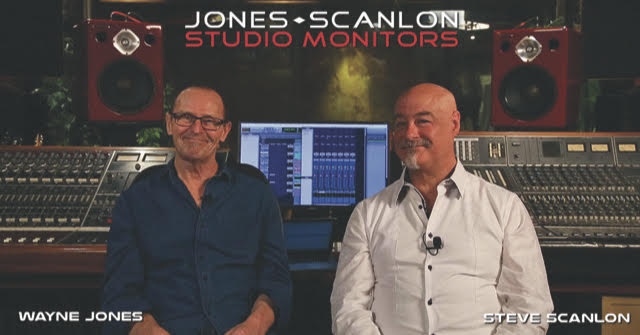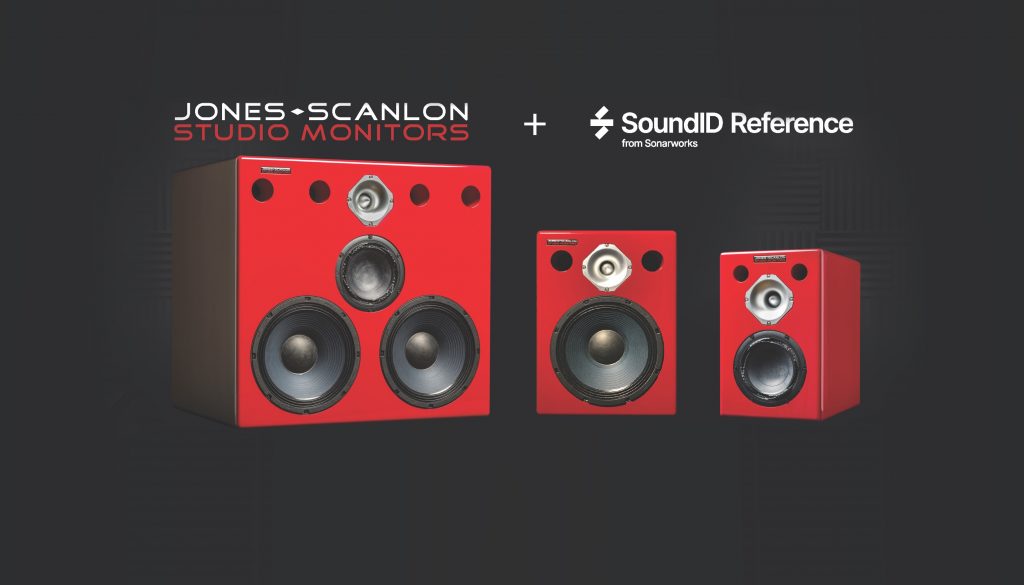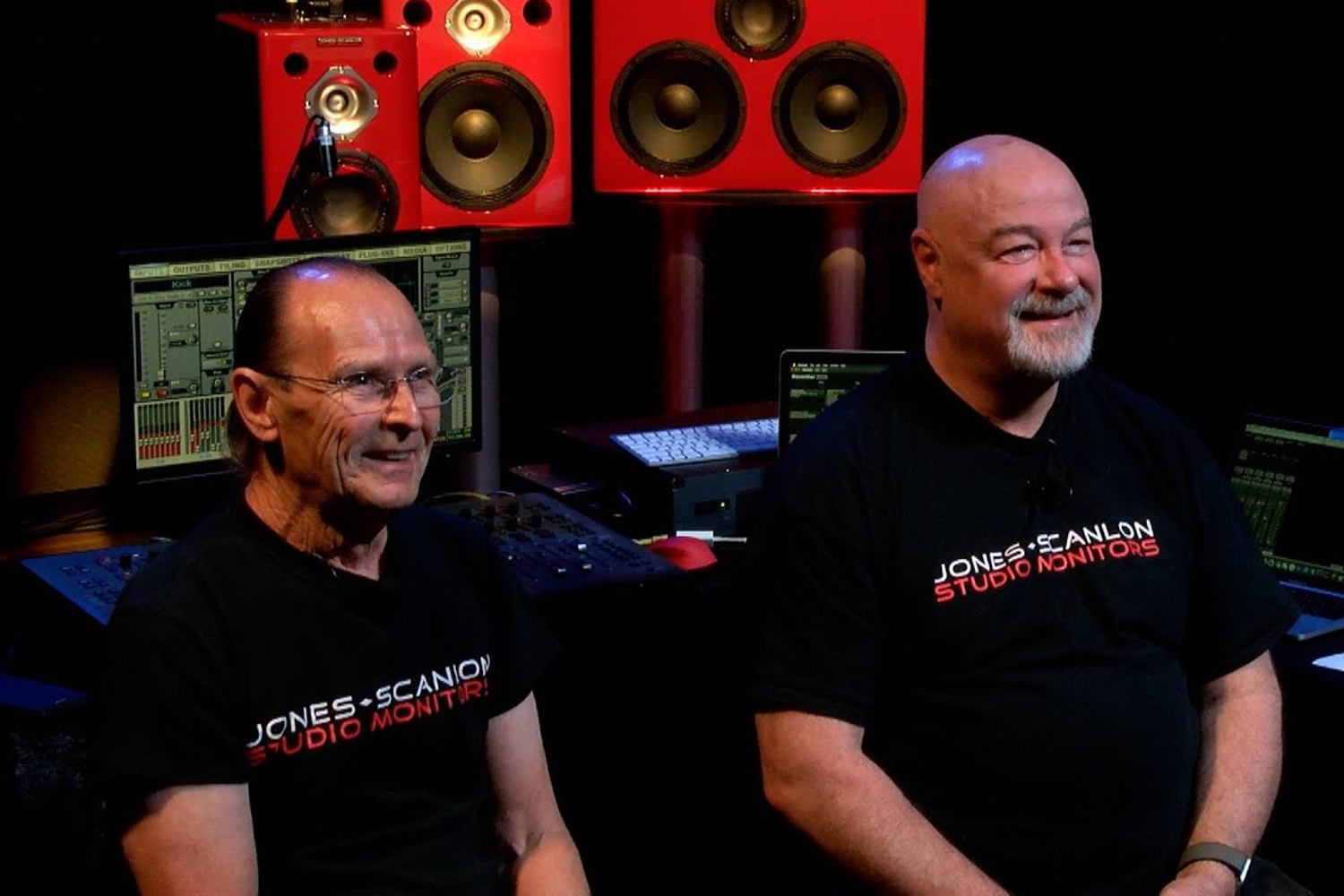We take a peek at the world-first collaboration between an Aussie company and the world leaders in DSP-based room correction
“Forgive all this,” remarks Steve Scanlon, one of Australia’s most in demand mix engineers and one-half of the world-conquering Jones-Scanlon Studio Monitor partnership, gesturing towards some bulk cartons of paper propping up one the brands’ premium 10″ Jones-Scanlon 2-Way Powered Monitors in the control room of his beautiful Elsternwick studio.
Summary:
- Australian Jones-Scanlon Monitors and Latvian Sonarworks have collaborated to produce world-first Sonarworks SoundID Reference-equipped Jones-Scanlon Studio Monitors.
- The monitors have the ability to measure and then store calibration information directly onto the monitors themselves, and then have this correction occur at the speaker level.
- This can all be achieved with zero latency, a bi-product of the incredibly powerful DSP found on the SoundID Reference-equipped Jones-Scanlon monitors.
Read up on all the latest interviews, features and columns here.
His business partner and long time friend, Wayne Jones was quick to explain, “the new technology is so phase coherent, that you inevitably find yourself tweaking monitor placements that you previously thought were ideal, even just by a fraction of an inch, hence the paper”.
The ‘new technology’ that Wayne was referring to is a Jones-Scanlon exclusive and a very big deal among the global fraternity of monitor manufacturers and electro-acousticians who have foreseen such a development lurking in the future, but until now had never struck on the right combination of DSP and adaptable componentry to make it all happen.
In a textbook example of Australian ingenuity, the duo have managed to become the first monitor manufacturer in the world to successfully integrate Sonarworks’ industry-defining SoundID Reference software into their line of highly touted studio monitors, coming through where others had previously fallen short and beating some very high profile manufacturers to the punch.
“When Covid hit and our overseas plans were temporarily put on hold, we used the time to really focus on making this technology work,” notes Wayne.
“Everything from the kind of firepower required at the DSP level, through to the way in which our speakers would interact with the pre-existing Sonarworks SoundID Reference architecture, we really just doubled down and made this project our primary focus for a solid year,” he says.

The implications these innovations have on the broader studio industry are massive, with the new Sonarworks SoundID Reference-equipped Jones-Scanlon Monitors proving the perfect marriage between software and hardware and pushing monitor performance that little bit closer to the idealised standard of 100 per cent accuracy at the monitoring position – something of a holy grail for studio engineers worldwide.
Even prior to these latest developments, the Aussie brand had been making some serious waves among the international audio community with their Reds, Baby Reds and Big Reds (and their Australian flavoured Kevlar impregnated eucalyptus pulp drivers) already proving a winner among some of the biggest names in studio. A sentiment echoed by the team at Sonarworks.
Martins Popelis, CEO and co-founder at Sonarworks, Latvia says “our users have been asking for hardware capable of running Sonarworks SoundID Reference for years now, and we are delighted to say that we have found an interested and capable partner to do so.
“The Jones-Scanlon monitors themselves are a premium quality product and deliver an unparalleled experience, but it’s the rooms, even the treated ones that have always been the weakest link in the chain and this is precisely where we come in.
“With the new Jones-Scanlon/SoundID Reference partnership you can be completely sure that you’re getting the most out of your beautiful monitors, without even thinking about it.
“I mean you don’t even have to bother with a DAW plugin anymore.
“I think this convenience and peace of mind will be appreciated by many engineers.”

He’s not wrong. The ability to measure and then store calibration information directly onto the monitors themselves, and then have this correction occur at the speaker level is exactly the kind of technological advancement the studio community have been waiting for. Perhaps most fascinating of all is that this can all be achieved with zero latency, a bi-product of the incredibly powerful DSP found on the SoundID Reference-equipped Jones-Scanlon monitors.
“These are constantly running at 192k and that’s coming directly from the monitors onboard DSP,” explains Steve.
“That means that I might be running 96k in the box, but what’s reaching my ears is the highest quality and most phase coherent version of what I’m working with inside the system,” he says.
Sitting in the mixer’s chair in Steve’s studio, the remarkable amount of clarity and precision afforded by this new collaboration is blatantly obvious from the very first notes. As we scroll through a diverse range of reference material pointing out certain details and performance characteristics, there is more than one occasion where all three of us notice a certain panning or EQ decision that would have gone unnoticed at least a hundred times before.
Steve points out the Helmholtz resonator situated under the couch that I have been sitting on and I gaze out at the various gold and platinum records lining the studio hallway, many of them from a time before such advanced room correction technology existed. I start to think about the baseline quality of the Jones-Scanlon boxes and how the quality of the room treatment and expertise in monitor placement alone would have likely made Steve’s studio a world-class listening experience, even prior to the Sonarworks SoundID Reference integration. Add Sonarworks SoundID Reference into the equation and you’ve got something truly pushing the limits of what is achievable in regards to accuracy at the monitoring position.
It’s at this point where I come to the realisation that this may be the most accurate room for monitoring I will ever have the pleasure of being in, so I start rapidly flicking through a whole manner of different reference material eager to experience as much different music as I can in the short time I am in the mixer’s chair.
Head to Wayne Jones Audio for more.

